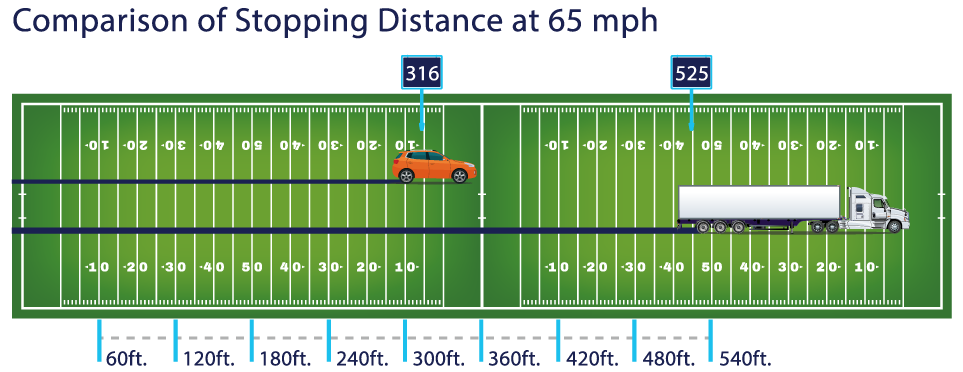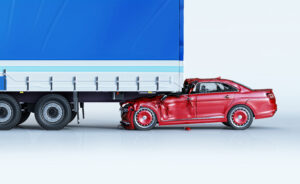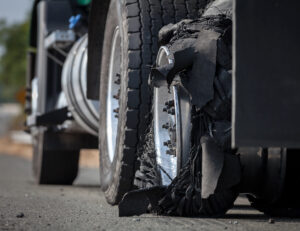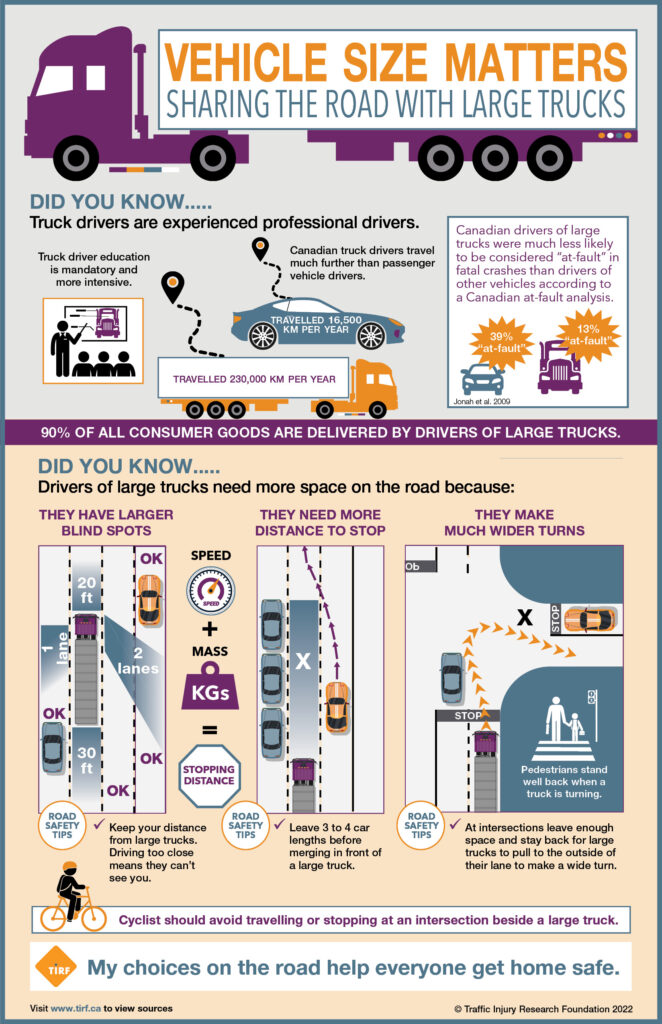
[ad_1]
Prime security methods for driving round giant vans
Regardless of the place you drive on the virtually 900,000 kms of roadway in Canada (or greater than 4 million kms within the US / 559,234 miles), odds are you’re sharing the highway with giant vans. If you happen to’ve been driving for extra years than you care to depend (like us), likelihood is the extra memorable takeaways from driver schooling courses all these years in the past targeted on seatbelts, dashing and shoulder checks. I think a lot of you may be hard-pressed to recall any teachings about sharing the highway with giant vans in a classroom.
I hadn’t actually thought of among the necessary variations between passenger automobiles and enormous vans till my first encounter with a big truck on the highway which occurred fairly early on in my driving profession. At age 18, I used to be training freeway driving with my teacher and two different college students within the teacher’s car. It was a darkish, snowy, windy evening in February on a poorly lit freeway. My driving teacher was distracted from the highway, and speaking to the opposite college students about issues we’d be studying. He paused, mid-sentence, to inform me to make a left flip off the freeway (and not using a devoted left-turn lane) on the backside of a fairly steep hill so I might pull right into a relaxation cease to modify drivers. It appeared fairly easy…..apart from the totally loaded logging truck which appeared out of nowhere, barreling down the hill behind me, headlights looming.
Now having grown up in Northern Ontario, I luckily had the good thing about spending a number of time as a passenger travelling on single-lane highways within the winter with a number of truck visitors. For sure, I simply knew from expertise (and physics class) it was fairly unlikely the truck driver was going to have the ability to decelerate, a lot much less cease rapidly in these situations. One look within the rearview mirror and my instincts screamed KEEP GOING!!!!!!!!
I did, and luckily, I lived to inform the story. I’m fairly certain my teacher gave me an A proper then and there. However not everybody’s first encounter with a big truck has been so lucky, and I strongly suggest towards studying about this subject within the college of laborious knocks.
So, what are the highest three methods to drive safely round giant vans?

Give giant vans sufficient house on the highway. The stopping distance a car wants is straight influenced by its mass. Autos which can be greater and heavier want extra distance to cease. It’s that straightforward. Take into consideration how a lot greater a tractor-trailer (a.ok.a. an 18-wheeler) is in comparison with a typical passenger car. The size of a tractor-trailer is the same as 3 or extra passenger automobiles. When they’re loaded with shopper items, livestock, meals, or 6 to eight brand-new, shiny automobiles, they’ll weigh tens of hundreds of kilos. Bringing that enormous, heavy car to a sudden cease, significantly when travelling at freeway speeds, takes a heck of a number of distance. So, below splendid situations, the stopping distance of a passenger car travelling at 65 mph is about 300 ft whereas a completely loaded semi-truck travelling on the identical velocity would want no less than 525 ft to come back to a cease. That’s almost 1.5 instances the size of a regular American soccer discipline (360 ft / 120 yards) and greater than twice the size of an NHL hockey rink (200 ft /66.7 yards). Regardless of your sport of selection, we will all agree, that may be a lengthy, great distance for a car the dimensions and mass of a completely loaded semi-truck to come back to an entire cease.



Giant vans have develop into a relentless presence on our roadways. Greater than 90% of all shopper merchandise and perishables are shipped by truck in Canada. We depend on the trucking trade to deliver the big majority of products and companies we use on daily basis to shops in our neighborhood or on to our door. Because of this, the variety of registered vans in Canada has elevated previously decade from 1,072,000 in 2013 to 1,310,000 in 2021.
The requirements and coaching required to acquire a business motorcar licence have additionally risen considerably previously decade. Necessary coaching, driver teaching, alcohol and drug testing and using driver monitoring methods to fight distraction and fatigue are only a few examples of the upper requirements that truck drivers should meet to maintain their licences. These drivers additionally spend greater than twice as a lot time driving as passenger car drivers, that means they’ve much more expertise. Because of this, truck drivers are among the most secure drivers on our roads.
However this shouldn’t imply passenger car drivers are complacent with regards to sharing the highway. It’s our job to arrange for the sudden, and let’s face it, a number of sudden occurs on the market nowadays.
Studying find out how to safely share the roads with giant vans is one thing we will all do to make sure everybody will get house to their household on the finish of the day. Among the nice assets accessible to communities, employers, and households to assist increase consciousness about necessary security methods for sharing the highway with giant vans are included within the beneath infographic.
Obtain & share this useful infographic on safely sharing the highway with giant vans:
#MySafeRoadHome weblog co-authors: Robyn Robertson, TIRF President & CEO and Karen Bowman, TIRF Director, Communications & Packages (Drop It And Drive® – DIAD), work collaboratively as co-authors, drawing from Robyn’s breadth of data on subjects alongside Karen’s running a blog background and expertise main the DIAD program since 2010. Robyn is the writer of TIRF’s data translation mannequin and is well-versed in implementation methods and operational practices throughout a number of sectors. So far, the DIAD program has been delivered to over 60,000 youth and workplaces throughout North America.
Supply paperwork and assets:
Car Measurement Issues – Sharing the Highway with Giant Vehicles Infographic (2022), https://tirf.ca/obtain/sharing-road-large-trucks-infographic
Highway Security Bulletin: A Query of Measurement (2016), Visitors Damage Analysis Basis https://tirf.ca/TIRFCAD16A
Sharing the Highway with Industrial Autos, US Nationwide Distracted Driving Coalition, September 2023 https://usnddc.org/wp-content/uploads/2023/08/NDDC-Share-the-Highway-Factsheet-9.pdf
Transport Canada, https://tc.canada.ca/en/road-transportation/statistics-data/canadian-motor-vehicle-traffic-collision-statistics-2021
Stopping Distance, Toronto Police Service https://www.tps.ca/media-centre/tales/slow-down-to-speed-up-reaction-time/ and https://www.fb.com/TorontoPolice/images/a.10150641089846297/10156050546491297/?sort=3
Semi Vehicles Can’t Cease Like Vehicles – Truck Good, Utah Division of Transportation https://trucksmart.udot.utah.gov/wp-content/uploads/2016/08/Truck_Smart_Stopping_Distance_Fact_Sheet.pdf
Our Roads, Our Security® and Ideas for Truck and Bus Drivers, Federal Motor Service Security Administration https://www.fmcsa.dot.gov/ourroads and https://www.fmcsa.dot.gov/ourroads/tips-truck-and-bus-drivers
How Lengthy Does It Take a Semi-Truck to Cease?, Satisfaction Transport | Jan 13, 2022 https://www.pridetransport.com/news-and-events/how-long-does-it-take-a-semitruck-to-stop
Associated subjects:
[ad_2]

